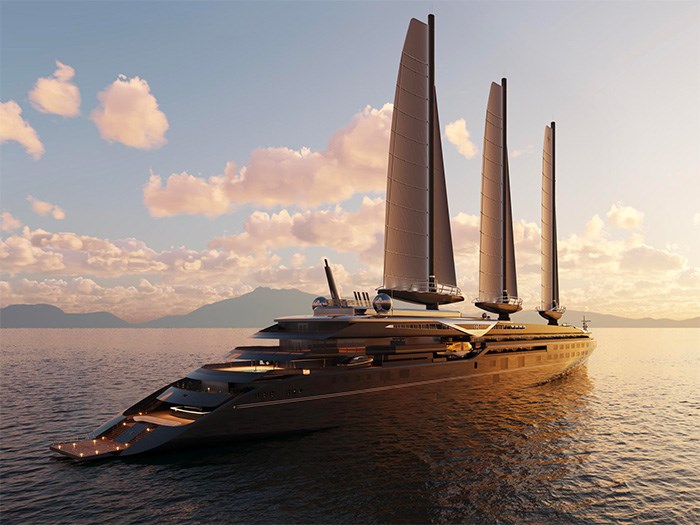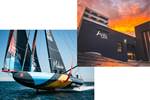Chantiers de l’Atlantique receives first initial orders for SolidSail
Chantiers de l’Atlantique equips its first sailing cargo ship and two upcoming cruise ships with its highly rigid, foldable carbon fiber SolidSail rig.

Orient Express Silenseas cruise liner. Photo Credit: Chantiers de l’Atlantique
A few orders have recently been confirmed for the all-composite SolidSail, designed and developed by France-based (Saint-Nazaire). The shipbuilder has signed a letter of intent with hotel group Accor (Issy-les-Moulineaux, France) for the construction of two large sailing ships. SolidSail will also be used to propel Neoline’s (Nantes, France) first sailing cargo ship.
SolidSail, a highly rigid, high-performance carbon fiber foldable sail and mast, will be the main propulsion system for Neoline’s 136-meter-long cargo vessel. It will consist of two 76-meter masts and a sail area of 3,000 square meters. Its use on the cargo ship is said to portend a wider application use for SolidSail rigs beyond the cruising sector.
Accor’s order will be confirmed within the next few weeks. The first ship, the Orient Express Silenseas — a reference to the legendary Normandy liner built by Chantiers de l'Atlantique in the 1930s — will be delivered in March 2026. The delivery of the second ship is scheduled for Sept. 1, 2027.
Orient Express Silenseas will be what is reported to be the world’s largest sailing ship (at 220 meters long) and the most advanced cruise ship in terms of environmental friendliness. The ship will comprise three 1,500-square-meter SolidSails 100 meters high. The ship’s hybrid propulsion system will combine wind power with an engine running on liquefied natural gas (LNG).
In terms of luxury, Orient Express Silenseas passengers will enjoy fifty suites — spread over four decks — a double spiral staircase, a swimming corridor suspended between two bridges, a 550-square-meter spa, a marina, two restaurants, a lounge bar, a cabaret theater or even a recording studio.
Related Content
-
Otto Aviation launches Phantom 3500 business jet with all-composite airframe from Leonardo
Promising 60% less fuel burn and 90% less emissions using SAF, the super-laminar flow design with windowless fuselage will be built using RTM in Florida facility with certification slated for 2030.
-
Infinite Composites: Type V tanks for space, hydrogen, automotive and more
After a decade of proving its linerless, weight-saving composite tanks with NASA and more than 30 aerospace companies, this CryoSphere pioneer is scaling for growth in commercial space and sustainable transportation on Earth.
-
Welding is not bonding
Discussion of the issues in our understanding of thermoplastic composite welded structures and certification of the latest materials and welding technologies for future airframes.






